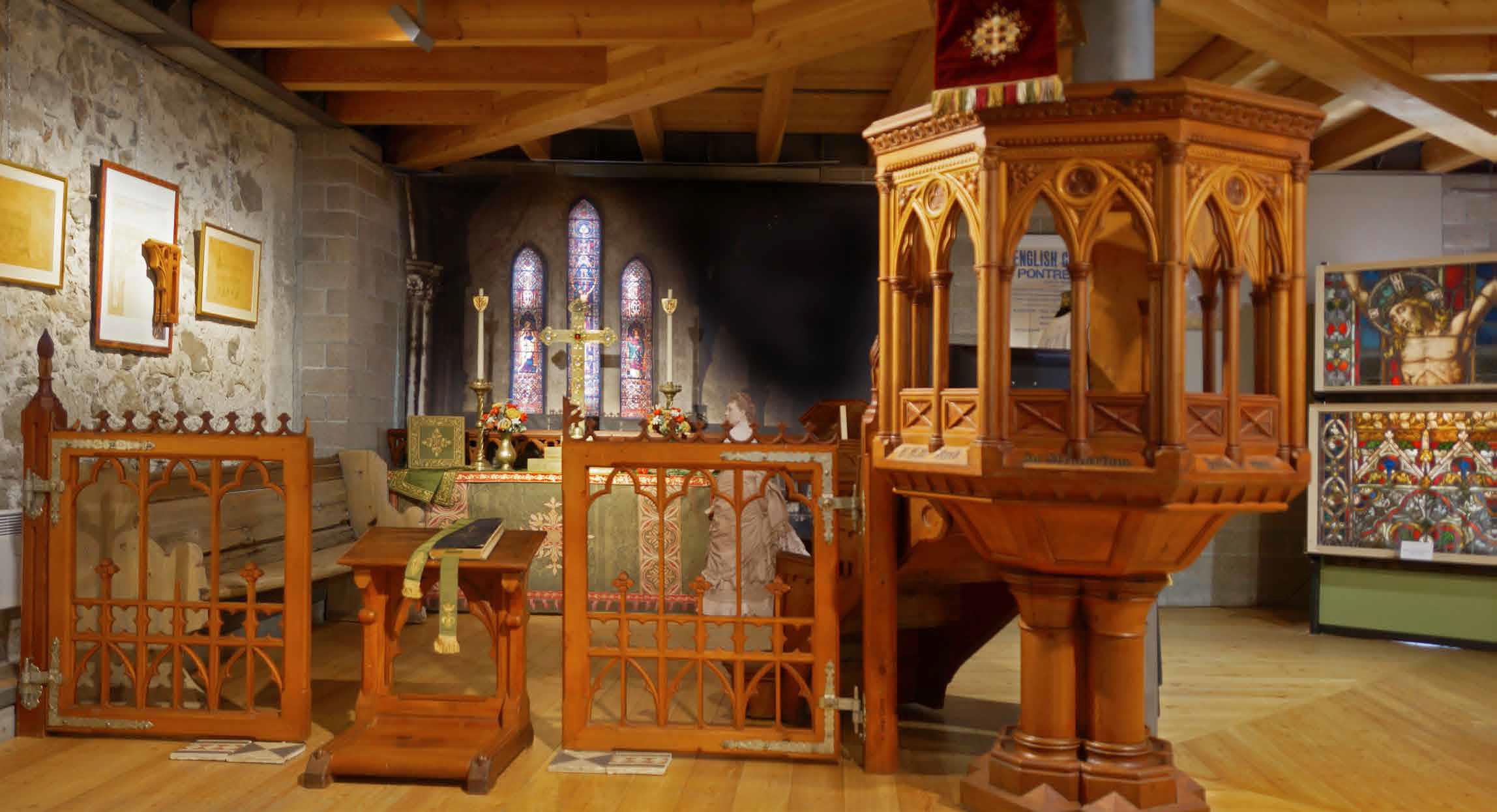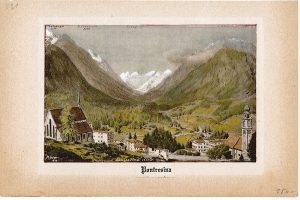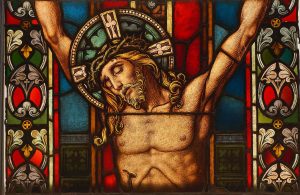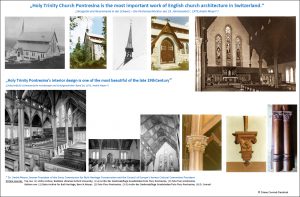Historic English church architecture in Switzerland highlights the importance of the 19th-Century summer seasons by presenting in the Museum Alpin Pontresina some well-known British personalities who visited Pontresina and the built heritage that they left behind but which sadly no longer exists.

The second half of the 19th Century saw an increase in prosperity for the population of the Upper Engadine. Rail travel in Europe enabled an increasing number of tourists to undertake the first stages of their journey by train. Whereas Thomas Cook’s tours, from 1863, concentrated on more accessible regions, individual travellers came to Pontresina in search of peace, scenic beauty and a restorative climate as well as the challenge of climbing some of the Eastern Alps’ peaks during ‘The Golden Age of Alpinism’.
Personalities, tradition and architecture 1860 – 1900
In Pontresina, guesthouses and hotels were extended or newly built in order to accommodate the influx of summer visitors, most of whom were British, sufficiently wealthy and with time to travel. To cater for their needs, new jobs were created: mountain guides, hotel staff, coachmen, shopkeepers and traders. The information provided by early guidebooks such as Baedeker or Murray was supplemented very importantly by the writings of those who spent time here and encouraged others to follow in their footsteps – travelogues and memoirs were published as well as many articles and letters in the British press, extolling the virtues of the Engadine and Pontresina in particular. Some of the authors and their works are featured in the exhibition. Other personalities whose time in Pontresina was significant or whose lives and work are still relevant today have been selected to represent the large number of prominent 19th-Century British tourists – they feature on banners or are portrayed in life-size photographs and a model.

Holy Trinity Church Pontresina (left) village church (right) 1890
Holy Trinity Church Pontresina is the most important work of English church architecture in SwitzerlandAs the number of British visitors increased in Switzerland, so also the need for them to have their own places of worship, that became an important part of the tourism infrastructure. Hoteliers offered ‘chapel rooms’ on their premises and often gave land for church buildings; these were paid for by the British themselves and almost always designed by British architects. The Church of England appointed seasonal or full-time chaplains to serve in Europe. By 1914 there were over 30 English church buildings in Switzerland.Of the four in the Engadine, two remain, in St. Moritz and Scuol-Tarasp; the churches in Samedan (1872-1965) and Pontresina (1882-1974) were demolished. Holy Trinity Church Pontresina was considered by Dr. André Meyer, former President of the Swiss Commission for Built Heritage Conservation, to be the most important of the English churches in Switzerland, with one of the most beautiful interiors of the late 19th Century. Exhibits of furnishings, artefacts, stained glass and textileson loan from the Rätische Museum Chur and the Kulturarchiv Samedan, give an insight into the architectural history of the building and the traditions of the Church of England. Books, documents and otheritems in display cases provide additional background information.
“An aim of the exhibition is to show the unique religious heritage that was destroyed and to raise awareness of the importance of preserving the remaining two English churches in the Engadine valley.” Diane Conrad-Daubrah
A Blast From the Past Brought to Life
Thorough research of the exhibition’s themes has been undertaken over three years by hobby historian Diane Conrad-Daubrah, with the support of experts in Switzerland and England. Images were painstakingly sourced, illustrated information banners drafted and contact made with descendants of prominent 19th-Century visitors. Using his photographic expertise and craftsmanship, Lukas Pfammatter (www.bilderwerkstatt.ch) has created a model of Holy Trinity Church Pontresina and reduced-scale reproductions of, for instance, its doors, altar and east windows as well as large-scale prints that set the scene for the church’s interior and the visitors’ library.

East window by Mayer of Munich 1882 (panels photographed individually, put together digitally)
An audiovisual productionon the first floor of the museum gives a glimpse of Victorian life and shows some of the ways in which British visitors spent their time in Pontresina. There follows a collection of images of the exterior and interior of Holy Trinity Church, to the accompaniment of opera and sacred music by composer Sir Arthur Sullivan, who was a regular visitor.
The current special exhibition as well as the permanent displays and exhibition rooms are open from 5 June to 21 October 2017, Monday to Saturday from 3.30 p.m. to 6.00 p.m. The Museum Alpin Pontresina looks forward to your visit!






Follow us: